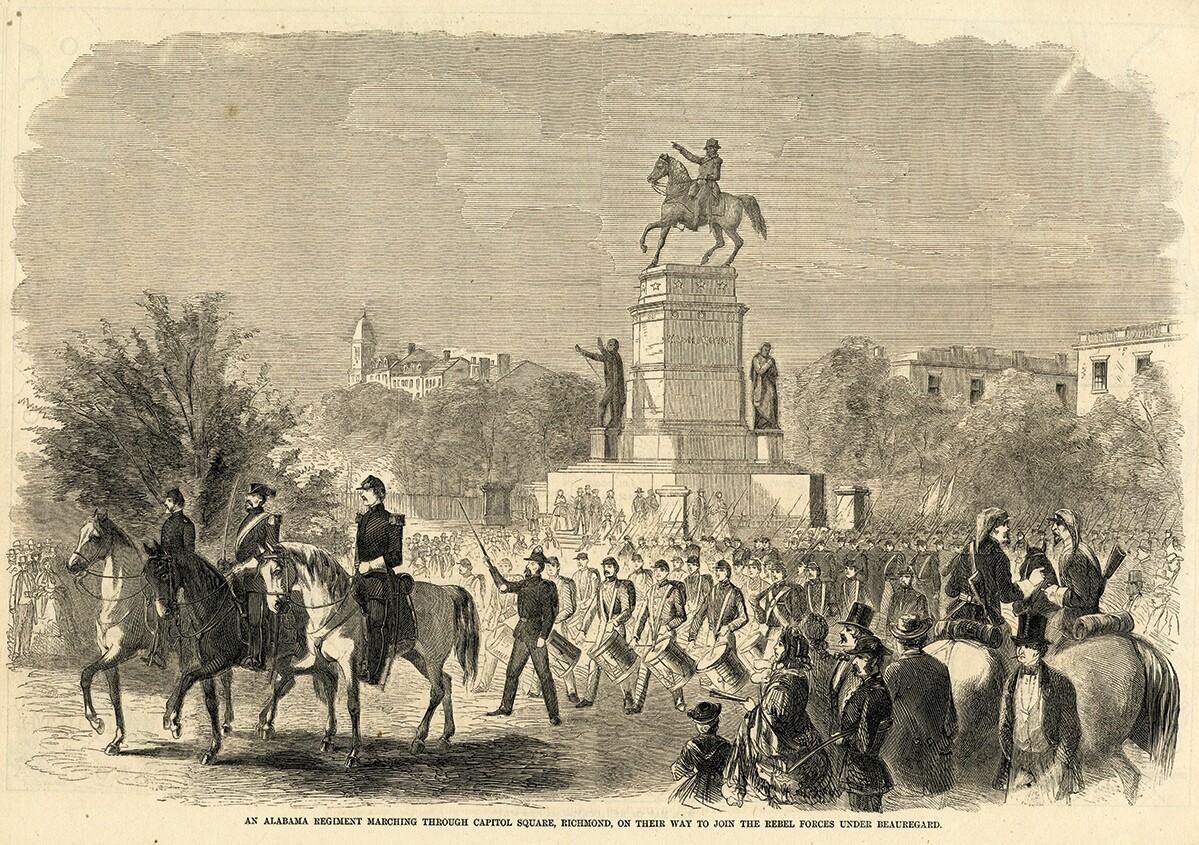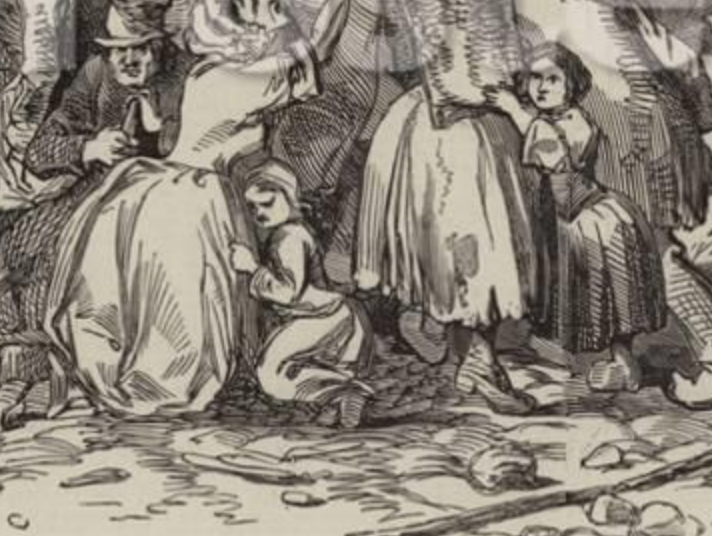RICHMOND, Va. - Nestled in downtown Richmond, the Shockoe Slip neighborhood brims with lunch spots, cafes, and shops.
But 160 years ago, this peaceful cobblestoned corner of the city became the flashpoint of one of the most infamous chapters in Virginia history.
The Bread Riot of 1863 was an act that some historians, like Mike Gorman, believe lit an early fuse in the movement toward women’s empowerment in America.
"I think it is absolutely the genesis of women being political actors in a very public way,” Gorman said.
On April 2, 1863, rioters made up of mostly poor women, ransacked warehouses along Cary and Main Streets.
"A lot of the stores there were broken into and entirely wiped out,” Gorman said. “Basically if it was a store it got looted.”

Author and historian Meredith Henne Baker said the lawlessness was born out of sheer survival.
"The kind of political tools available to women were pretty limited,” Henne Baker said. “So there are shortages in housing and inflation is rampant. Things cost ten times as much as they did a few years before.”
The Bread Riot exploded while the Civil War raged on Richmond’s doorstep.
Library of Virginia historian Greg Kimball said a lack of food, poor working conditions, and refugees pouring into Richmond led to the social fabric ripping at the seams.
Desperate families starve.
“It must have been absolutely desperate to survive every day,” Kimball said. “This is a political act. That they’re carrying out. This is not just a riot. It has real implications.”
Kimball said the Richmond Bread Riot began when street vendor Mary Jackson organized a group of women to march to the Executive Mansion.
“So being a market person she sees a lot of people. She communicates with a lot of people,” Kimball said.

Jackson and her cohorts demanded a meeting with Virginia’s Governor.
They did not get one.
“Women took to the streets. Armed women went and protested and it turned violent,” Gorman said.
The enraged mass descended from Capitol Square onto the retail district below where stores and warehouses were filled with supplies. Desperate women who can’t feed their families take what they can.
“To say this was a rarity was an understatement,” Gorman said. “There isn’t a word for it. This just doesn’t happen.”
Letters written by Bread Riot eyewitnesses survive at the Virginia Museum of History and Culture.

“From there they went down on Cary Street and broke into the store next to Uncle William’s. And got all the bacon, soap, butter, and brooms and candles.”
Anarchy and turmoil engulf downtown Richmond.
“By this time various estimates of the crowd had grown to about 5,000,” Gorman said.
The shocking Bread Riot shattered the long-held myth of a docile Southern Belle.
“It is not this Gone With the Wind situation where the ladies are home fanning themselves and waiting for the men folk to come back," Gorman said. "They are active participants and they are responding in their own way."
After nearly two hours, the city guard was able to restore order. Ringleaders including Mary Jackson were arrested and jailed.
“A lot of the eyewitnesses to the event talk about how emaciated the people are,” Kimball said.
At first sympathetic Richmonders supported the women, but leaders were able to suppress newspaper coverage in Virginia.

“This is a national event,” Kimball said. “This is being reported in New York in Philadelphia and other places.”
Historian Mike Gorman says scapegoats are sought.
“We can’t even process this. They must be foreign-born. Yankees. Prostitutes. You see that over and over again in the way they are described. But of course, this is heralding a larger issue that I think demands our attention,” Gorman said.
With the Confederacy buckling under the weight of war, similar riots break out across the South.
“They’re unhappy and they let the leaders know,” Henne Baker said.
The capital’s calamity was the largest act of rebellion by a segment largely ignored.
“People we never get to hear from. People that aren’t part of written history and here they are almost loudly proclaiming this is what it's like folks. Remember us,” Gorman said. “I find that incredibly powerful. And I think we should listen to them.”
Following the upheaval, the government opens markets for the poor to buy food at prices they can afford.

“This might be the kind of political action that might be used to today but back then for it to occur at all is revolutionary,” Gorman said.
“I think it is important to remember the Richmond Bread Riot because the people at the time didn’t want it to be remembered,” Henne Baker added.
A footnote in Virginia history, the Richmond Bread Riot lasted just two hours.
But Meredith Henne Baker said this often overlooked chapter in women’s history still reverberates across the centuries.
“Because it was a very bold statement by these women and their message was ‘If you’re not going to help us then we’re just going to help ourselves.”
A historic marker detailing the Richmond Bread Riot was erected in 2020 at the corner of 10th and Main Streets in downtown Richmond.
Watch for Wayne Covil's stories on CBS 6 News and WTVR.com. If you know someone Wayne should profile, email him wayne.covil@wtvr.com.
Find unique, award-winning stories that celebrate voices in our community on CBS 6 News.







